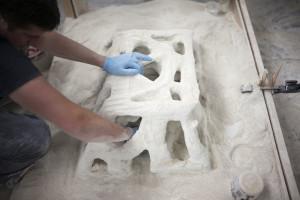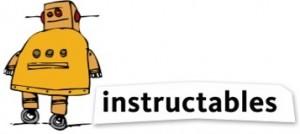 Artist, architecture student and robot builder Clayton Muhleman teamed up with his fellow Instructable user Alan Cation to create a cool mobile 3D printer that can 3D print large-scale objects using sawdust. The project was just a beginning however, as the pair really wanted to convert it into a printer that could use concrete as a printing medium. So in order to better understand exactly how concrete would work as a 3D printable powder material the pair put their heads together to create a cool, and relatively simple, do-it-yourself Concrete 3D Printer. While they both admit that they have more experimenting to do before they can adapt concrete to their mobile 3D printer concept, they liked their project enough to share it with the Instructables community.
Artist, architecture student and robot builder Clayton Muhleman teamed up with his fellow Instructable user Alan Cation to create a cool mobile 3D printer that can 3D print large-scale objects using sawdust. The project was just a beginning however, as the pair really wanted to convert it into a printer that could use concrete as a printing medium. So in order to better understand exactly how concrete would work as a 3D printable powder material the pair put their heads together to create a cool, and relatively simple, do-it-yourself Concrete 3D Printer. While they both admit that they have more experimenting to do before they can adapt concrete to their mobile 3D printer concept, they liked their project enough to share it with the Instructables community.
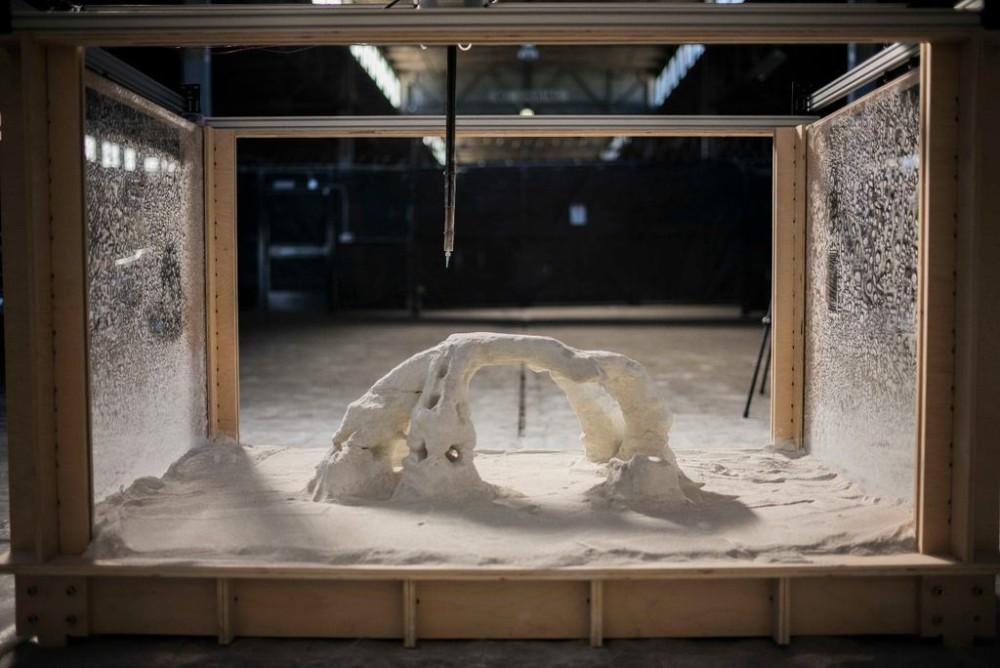 Any project that deals with robotics and programming isn’t going to be a walk in the park, but Muhleman and Cation’s concrete 3D printer is actually a great project for newer makers to cut their teeth on. Not only will it teach the basics of building a simple CNC machine, sans the spindle, but the Instructable also goes in depth on how to use G-code. The project is also a great introduction to the basics of powderbed 3D printers, which is a lot more complicated to do correctly than it may seem.
Any project that deals with robotics and programming isn’t going to be a walk in the park, but Muhleman and Cation’s concrete 3D printer is actually a great project for newer makers to cut their teeth on. Not only will it teach the basics of building a simple CNC machine, sans the spindle, but the Instructable also goes in depth on how to use G-code. The project is also a great introduction to the basics of powderbed 3D printers, which is a lot more complicated to do correctly than it may seem.
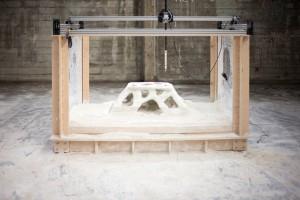 The finished concrete 3D printer will essentially be a heavily modified and beefed up Shapeoko 2 CNC machine, which is an easy to build open source, desktop CNC machine. But rather than some of the more dangerous parts of a CNC machine instead it will have a binding agent reservoir powered by a peristaltic pump to print the design into the concrete 3D printing material. Anyone looking to build their own should remember that a lot of the functions that are common on desktop 3D printers need to be done manually with this project, including leveling the bed, manually calibrating the printer and manually controlling the Z-axis.
The finished concrete 3D printer will essentially be a heavily modified and beefed up Shapeoko 2 CNC machine, which is an easy to build open source, desktop CNC machine. But rather than some of the more dangerous parts of a CNC machine instead it will have a binding agent reservoir powered by a peristaltic pump to print the design into the concrete 3D printing material. Anyone looking to build their own should remember that a lot of the functions that are common on desktop 3D printers need to be done manually with this project, including leveling the bed, manually calibrating the printer and manually controlling the Z-axis.
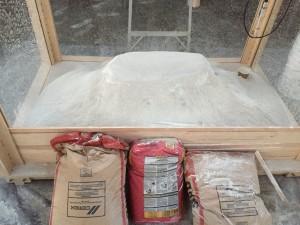 Muhleman and Cation used concrete mixed with sand as their printing medium, but their printer design could also use other powder materials, like plaster. To print their organic designs, they selected a 30 grit fine aggregate sand with a 2:1 ratio with white cement, however it could be bumped up to a 3:1 ratio to produce a thicker aggregate. In total they used about 1,000 pounds of sand and 500 pounds of cement for the three objects that they printed, each with a 2′ x 3′ x 1′ volume. So you’ll need to buy a lot of sand and concrete for this project. The binding material that they used was a soil hardener called polypavement, which makes the initial print even stronger as it continues to dry and set.
Muhleman and Cation used concrete mixed with sand as their printing medium, but their printer design could also use other powder materials, like plaster. To print their organic designs, they selected a 30 grit fine aggregate sand with a 2:1 ratio with white cement, however it could be bumped up to a 3:1 ratio to produce a thicker aggregate. In total they used about 1,000 pounds of sand and 500 pounds of cement for the three objects that they printed, each with a 2′ x 3′ x 1′ volume. So you’ll need to buy a lot of sand and concrete for this project. The binding material that they used was a soil hardener called polypavement, which makes the initial print even stronger as it continues to dry and set.
All of the objects that they printed were sculptural or architectural in nature, but the printer is perfectly capable of 3D printing other concrete objects like flower pots, furnishings, decorative statuary or even simple architectural features. Despite the resolution being pretty low, there is actually a lot of detail possible with this printer depending on what it is being used to print.
“Coming out of this [Instructable], you’ll feel like a 3D printing champ. You’ll get to walk all the way through the powder bed 3D printing process, from understanding the geometric constraints and possibility all the way to how to excavate your print without breaking it,” said Muhleman on his Instructable.
Here are a few videos of Muhleman and Cation removing their 3D printed creations from the concrete and sand mixture:
The Instructable has a complete list of all of the components that are needed for the project and clearly and precisely walks readers through each and every step. But it also takes the time to slow down a bit and explain some of the reasons why they made the design choices that they did. They even make a point of mentioning that the way that they built their powder 3D printer isn’t the only way a powder 3D printer can be made, and they encourage anyone interested in building their own to experiment and have fun with the project.
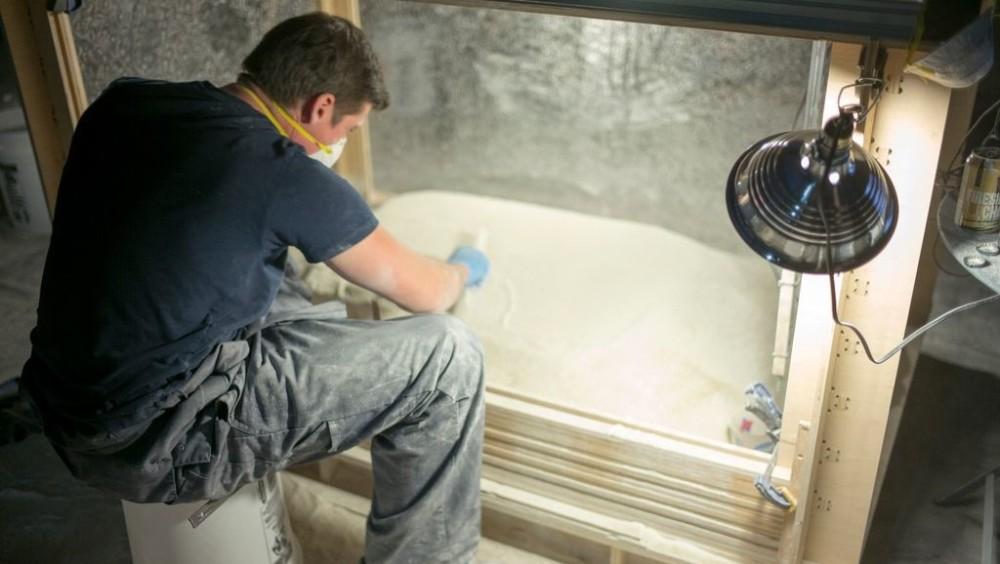 On top of being detailed and informative, this Instructable is actually a really great read, even if you have no desire to build a 3D printer of this type yourself. While I do have a relatively decent grasp of the technologies involved in building 3D printers, I am not even close to being an engineer or an advanced maker of any kind. But while reading this, I really felt like this project wasn’t too complicated or difficult for me to follow and I could probably produce something resembling a working device. Minus the programming at least, I’m terrible at programming. That’s what Fivefr is for. Tell us what you think about this new machine in the DIY Concrete 3D Printer forum over at 3DPB.com.
On top of being detailed and informative, this Instructable is actually a really great read, even if you have no desire to build a 3D printer of this type yourself. While I do have a relatively decent grasp of the technologies involved in building 3D printers, I am not even close to being an engineer or an advanced maker of any kind. But while reading this, I really felt like this project wasn’t too complicated or difficult for me to follow and I could probably produce something resembling a working device. Minus the programming at least, I’m terrible at programming. That’s what Fivefr is for. Tell us what you think about this new machine in the DIY Concrete 3D Printer forum over at 3DPB.com.
Subscribe to Our Email Newsletter
Stay up-to-date on all the latest news from the 3D printing industry and receive information and offers from third party vendors.
You May Also Like
Precision at the Microscale: UK Researchers Advance Medical Devices with BMF’s 3D Printing Tech
University of Nottingham researchers are using Boston Micro Fabrication‘s (BMF) 3D printing technology to develop medical devices that improve compatibility with human tissue. Funded by a UK grant, this project...
3D Printing Webinar and Event Roundup: April 21, 2024
It’s another busy week of webinars and events, starting with Hannover Messe in Germany and continuing with Metalcasting Congress, Chinaplas, TechBlick’s Innovation Festival, and more. Stratasys continues its advanced training...
3D Printing Webinar and Event Roundup: March 17, 2024
It’s another busy week of webinars and events, including SALMED 2024 and AM Forum in Berlin. Stratasys continues its in-person training and is offering two webinars, ASTM is holding a...
3D Printed Micro Antenna is 15% Smaller and 6X Lighter
Horizon Microtechnologies has achieved success in creating a high-frequency D-Band horn antenna through micro 3D printing. However, this achievement did not rely solely on 3D printing; it involved a combination...


